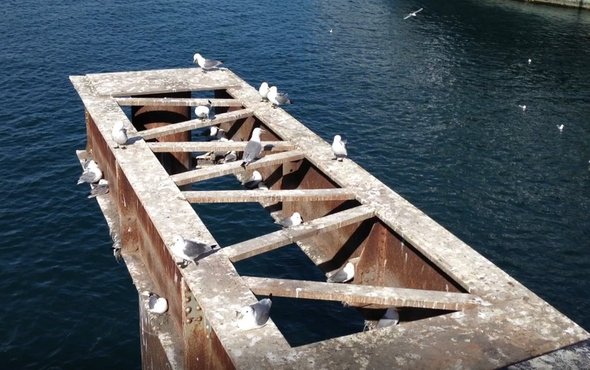This is Scientific American — 60-Second Science. I'm Christopher Intagliata.
Today we have sophisticated buoys packed with instruments, and robotic underwater drones. But a more than a century ago the seas were surveyed by different types of autonomous data-gathering instruments. Which also happened to be alive:
"We just call them sea otters and white sharks and bluefin tuna." Kyle Van Houtan is director of science at the Monterey Bay Aquarium. And what he means is that marine mammals and fish and seabirds concentrate unique chemical clues about the ocean and what lives in it, within their tissues. "In their bones, in their feathers, in their vertebrae, in their earwax."
For his most recent study, Van Houtan needed to locate feathers from some long-dead birds.
"Let's see, so I'm just looking here, that was a Bulwer's petrel, from French Frigate Shoals—I have the database open in front of me here..." Molly Hagemann, who describes herself as 'a librarian for dead animals' at Honolulu's Bishop Museum, was able to help.
"So that one was collected in May 1891. And then we also had a brown noddy from 1895..."

The scientists analyzed the ratios of heavy to light nitrogen isotopes in those old feathers, compared to ratios in modern-day specimens. And they found that Pacific seabirds of yore ate diets dominated by fish. But the birds of today were fishing farther down in the food web. And seemed to be eating nearly twice as much squid as their ancestors did—maybe due to the combined effects of commercial fishing and climate change. The details are in the journal Science Advances.
Now, nothing against consuming calamari. But: "KVH: It's a risky business to depend on squid. Because squid go through these boom/bust cycles." So the shift in protein source could one day leave the birds hungry.
But the bigger picture is that it appears food webs in the central Pacific have lost components and become less complex over the last 130 years—meaning they're less resilient to changes.
KVH: "It's more than just climate: It's all the noise we're adding to the ocean. All of the contaminants, that were plenty in the ocean, the microplastic. It's a warming ocean. It's an ocean with more nutrients. It's an ocean with less oxygen.."
And it's an ocean with less capacity to recover from all those insults.
Thanks for listening for Scientific American — 60-Second Science. I'm Christopher Intagliata.











